-
 bitcoin
bitcoin $108221.513755 USD
-0.10% -
 ethereum
ethereum $3817.049350 USD
-1.16% -
 tether
tether $1.000184 USD
-0.03% -
 bnb
bnb $1081.373706 USD
1.55% -
 xrp
xrp $2.367284 USD
-2.30% -
 solana
solana $180.847708 USD
-3.07% -
 usd-coin
usd-coin $0.999936 USD
0.00% -
 tron
tron $0.322230 USD
-0.06% -
 dogecoin
dogecoin $0.190590 USD
-1.92% -
 cardano
cardano $0.626657 USD
-2.42% -
 hyperliquid
hyperliquid $37.280123 USD
6.15% -
 chainlink
chainlink $17.222315 USD
-2.46% -
 ethena-usde
ethena-usde $0.999312 USD
-0.03% -
 stellar
stellar $0.309699 USD
-0.98% -
 bitcoin-cash
bitcoin-cash $475.445788 USD
-1.02%
The ultimate guide to crypto mining software
Crypto mining software has evolved from basic CPU tools to advanced platforms like CGMiner and Hive OS, supporting ASICs, GPUs, and mining pools with features for efficiency, security, and real-time monitoring.
Oct 21, 2025 at 04:18 am

The Evolution of Crypto Mining Software
1. In the early days of cryptocurrency, mining was a simple process that could be performed on standard personal computers using basic CPU-based software. Bitcoin’s original release allowed miners to use their desktops and laptops to solve cryptographic puzzles and earn rewards. As the network grew, so did competition, prompting the development of more powerful tools tailored specifically for mining efficiency.
2. The shift from CPU to GPU mining marked a significant turning point. Graphics processing units offered far greater computational power, enabling users to process hashes at much higher speeds. Software like CGMiner and GUIMiner emerged, providing user-friendly interfaces and enhanced control over hardware settings. These tools supported multiple algorithms and became essential for serious miners.
3. With the rise of application-specific integrated circuits (ASICs), mining software had to adapt once again. ASIC devices are designed solely for mining and require specialized software that can communicate efficiently with the hardware. Programs such as BFGMiner and EasyMiner began incorporating support for ASIC firmware, remote interface capabilities, and real-time monitoring features.
4. Today's mining software must handle complex tasks including fan speed regulation, temperature monitoring, power consumption optimization, and pool management. Modern platforms integrate seamlessly with mining pools, allowing individuals to combine hash power and receive consistent payouts. This evolution reflects the increasing professionalism within the crypto mining ecosystem.
5. Open-source solutions continue to dominate the space due to transparency and community-driven improvements. Developers regularly update repositories to patch vulnerabilities, improve compatibility, and add new features. Miners benefit from frequent updates and peer-reviewed codebases, which enhance security and performance across diverse setups.
Top Crypto Mining Software Platforms in 2024
1. CGMiner remains one of the most widely used mining applications, known for its stability and cross-platform support. It works with both GPUs and ASICs, offering advanced options such as clock frequency tuning and automated failover between mining pools. Its command-line interface appeals to experienced users who prefer granular control over operations.
2. Hive OS is a cloud-based operating system designed exclusively for cryptocurrency mining farms. It provides centralized management for hundreds of rigs through a web dashboard. Features include remote rebooting, profit-switching algorithms, and real-time analytics. Hive OS supports all major hardware brands and integrates with popular mining backends like Claymore and PhoenixMiner.
3. Awesome Miner stands out for its intuitive graphical interface and robust automation tools. It supports over 50 different mining engines and allows users to set up custom triggers based on temperature, hashrate drops, or electricity costs. Built-in profit calculators help operators switch between coins dynamically to maximize returns.
4. Braiins OS+ offers a secure, optimized firmware alternative for ASIC miners. Developed by the team behind Stratum V2 protocol, it enhances connection efficiency and reduces bandwidth usage. Miners using Braiins OS+ gain access to proprietary pool services with lower fees and improved payout accuracy.
5. TeamRedMiner caters specifically to AMD GPU owners, delivering high-performance mining for Ethereum forks and other GPU-mineable coins. It includes built-in watchdog functions that restart the miner if instability occurs and supports SSL encryption for secure communications with mining pools.
Choosing the Right Mining Software for Your Setup
1. Compatibility with your hardware is the primary consideration when selecting mining software. NVIDIA GPUs perform best with CUDA-optimized programs like GMiner or T-Rex, while AMD cards often achieve superior results with TeamRedMiner or SRBMiner. Ensuring driver alignment and API support prevents crashes and underperformance.
2. Energy efficiency plays a critical role in profitability. Some software packages include power-limiting features that reduce wattage consumption without significantly impacting hashrate. Monitoring tools within the software allow miners to track kWh usage and adjust settings accordingly to maintain optimal efficiency ratios.
3. Security should not be overlooked. Mining rigs are attractive targets for hackers seeking to hijack computational resources. Choose software with regular updates, two-factor authentication support, and encrypted connections to pools. Avoid downloading executables from unverified sources to prevent malware infiltration.
4. Ease of use varies significantly across platforms. Beginners may favor GUI-based systems like EasyMiner or Hive OS, which simplify configuration and provide visual feedback. Advanced users might prefer lightweight, scriptable tools such as CGMiner or BFGMiner that offer deeper customization via terminal commands.
5. Community support and documentation influence long-term usability. Active forums, detailed wikis, and responsive developers contribute to quicker troubleshooting and faster deployment. Mining software backed by large communities tends to have better longevity and adaptation to changing network conditions.
Frequently Asked Questions
What is the difference between mining software and a mining pool?Mining software runs on your local machine or rig and manages the actual computation required to mine blocks. A mining pool is a server that combines the processing power of multiple miners to increase the chances of solving a block. The software connects to the pool to submit work and receive share assignments.
Can I use the same mining software for Bitcoin and Ethereum?Not always. Bitcoin uses the SHA-256 algorithm, which is best handled by ASIC-focused software like BFGMiner or Braiins OS. Ethereum, being mined via Ethash (and its forks post-proof-of-work), relies heavily on GPU-optimized tools such as PhoenixMiner or GMiner. The software must match the consensus algorithm of the coin being mined.
Is it safe to run mining software on a home computer?Running mining software can place heavy loads on CPUs, GPUs, and power supplies. Prolonged operation may lead to overheating or reduced component lifespan. Proper ventilation, voltage regulation, and monitoring are necessary. Additionally, only download software from official sources to avoid malicious payloads disguised as miners.
Do I need an internet connection to mine cryptocurrency?Yes, a stable internet connection is essential. Mining software must constantly communicate with the blockchain network and mining pool servers to receive job assignments, submit proofs of work, and synchronize with the latest block data. High latency or intermittent connectivity can result in rejected shares and lost revenue.
Disclaimer:info@kdj.com
The information provided is not trading advice. kdj.com does not assume any responsibility for any investments made based on the information provided in this article. Cryptocurrencies are highly volatile and it is highly recommended that you invest with caution after thorough research!
If you believe that the content used on this website infringes your copyright, please contact us immediately (info@kdj.com) and we will delete it promptly.
- Essex Post Office, 5p Coins, and King Charles: A Royal Mint Revelation!
- 2025-10-23 10:30:16
- Waymo's Newark Airport AV Tests: Alphabet's AI Gamble Pays Off?
- 2025-10-23 10:30:16
- King Charles 5p Coins: A Royal Flush in Your Pocket?
- 2025-10-23 10:35:18
- Solana, Crypto Advisory, and Forward Industries: A New York Minute on the Future of Finance
- 2025-10-23 08:51:22
- MAGACOIN: Ethereum Whales Dive into the Hottest Presale of 2025
- 2025-10-23 08:51:22
- Kadena's End of the Road? KDA Token Plummets Amid Project Abandonment
- 2025-10-23 08:55:34
Related knowledge
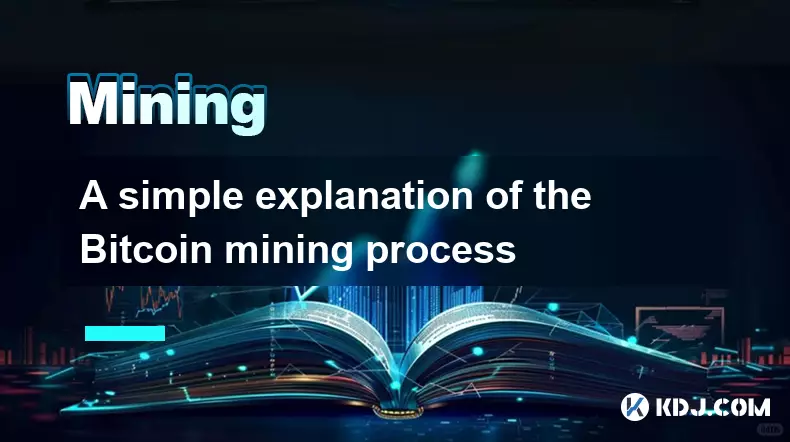
A simple explanation of the Bitcoin mining process
Oct 21,2025 at 05:54am
What Is Bitcoin Mining?1. Bitcoin mining is the process by which new bitcoins are introduced into circulation and transactions are verified on the blo...
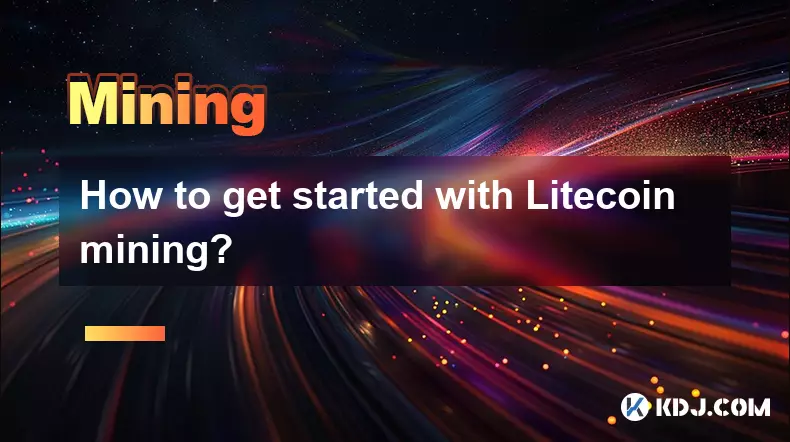
How to get started with Litecoin mining?
Oct 19,2025 at 07:01am
Understanding Litecoin Mining Basics1. Litecoin mining involves verifying transactions on the Litecoin blockchain using computational power. Miners so...
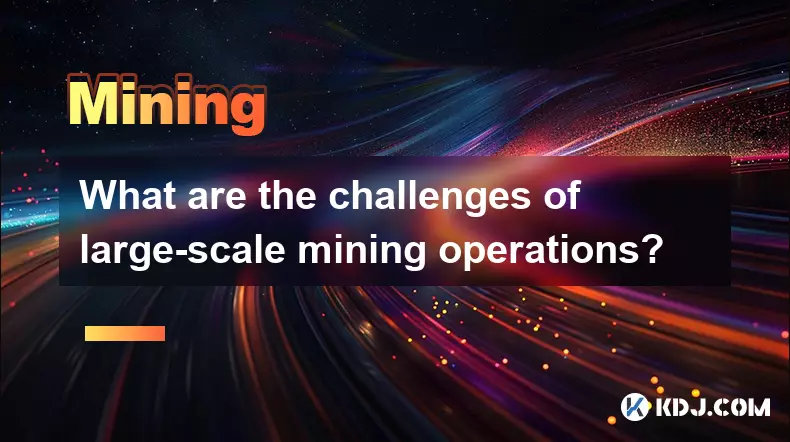
What are the challenges of large-scale mining operations?
Oct 18,2025 at 07:01pm
Energy Consumption and Power Management1. Large-scale mining operations require massive amounts of electricity to power thousands of ASICs or GPUs run...
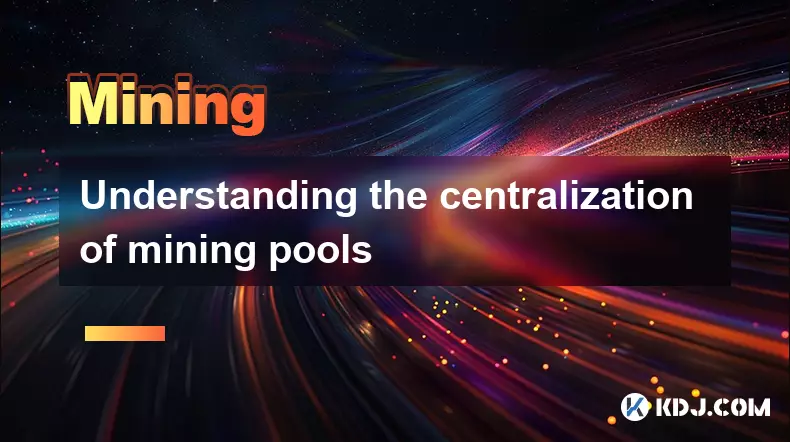
Understanding the centralization of mining pools
Oct 24,2025 at 05:19am
Power Distribution in Cryptocurrency Mining Networks1. The structure of mining pools plays a crucial role in determining how decentralized a blockchai...
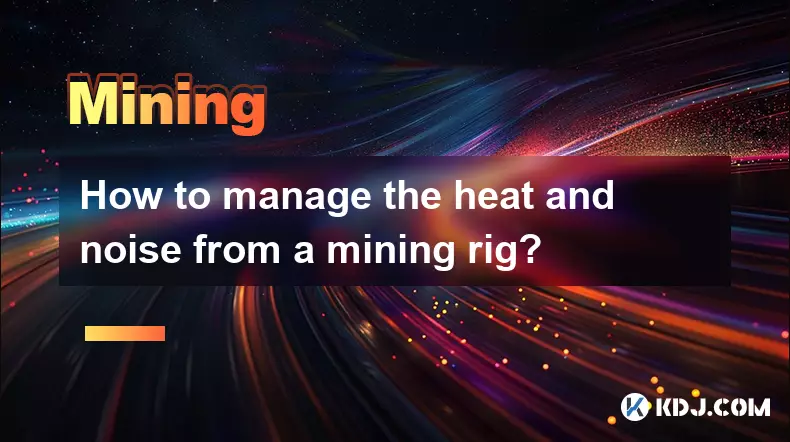
How to manage the heat and noise from a mining rig?
Oct 22,2025 at 05:36pm
Optimizing Ventilation for Mining Rigs1. Proper airflow is essential when running a mining rig continuously. Position the rig in a well-ventilated roo...

Can a Raspberry Pi be used for crypto mining?
Oct 21,2025 at 04:18pm
Feasibility of Using Raspberry Pi for Cryptocurrency Mining1. The Raspberry Pi is a compact, low-power single-board computer designed primarily for ed...

A simple explanation of the Bitcoin mining process
Oct 21,2025 at 05:54am
What Is Bitcoin Mining?1. Bitcoin mining is the process by which new bitcoins are introduced into circulation and transactions are verified on the blo...

How to get started with Litecoin mining?
Oct 19,2025 at 07:01am
Understanding Litecoin Mining Basics1. Litecoin mining involves verifying transactions on the Litecoin blockchain using computational power. Miners so...

What are the challenges of large-scale mining operations?
Oct 18,2025 at 07:01pm
Energy Consumption and Power Management1. Large-scale mining operations require massive amounts of electricity to power thousands of ASICs or GPUs run...

Understanding the centralization of mining pools
Oct 24,2025 at 05:19am
Power Distribution in Cryptocurrency Mining Networks1. The structure of mining pools plays a crucial role in determining how decentralized a blockchai...

How to manage the heat and noise from a mining rig?
Oct 22,2025 at 05:36pm
Optimizing Ventilation for Mining Rigs1. Proper airflow is essential when running a mining rig continuously. Position the rig in a well-ventilated roo...

Can a Raspberry Pi be used for crypto mining?
Oct 21,2025 at 04:18pm
Feasibility of Using Raspberry Pi for Cryptocurrency Mining1. The Raspberry Pi is a compact, low-power single-board computer designed primarily for ed...
See all articles










































































